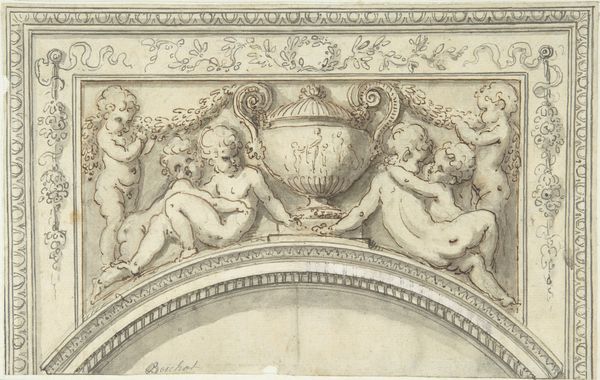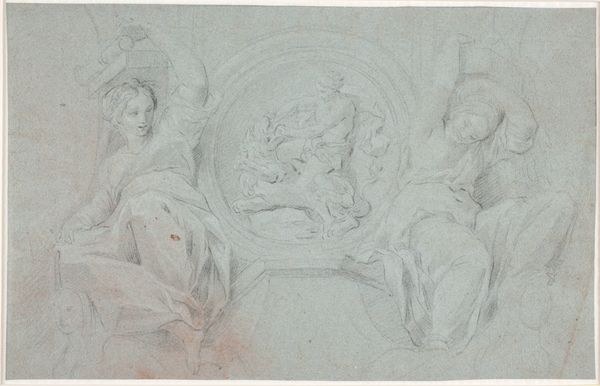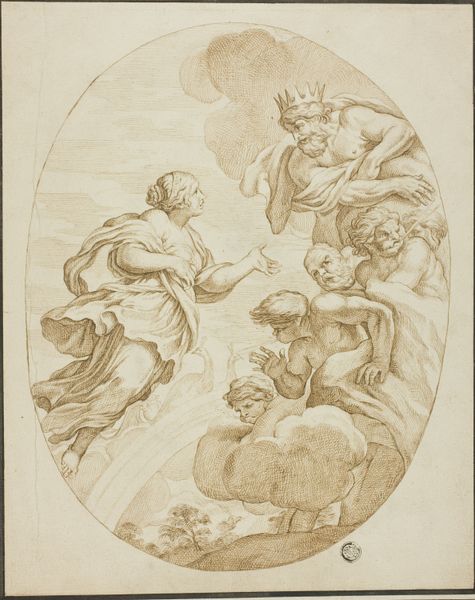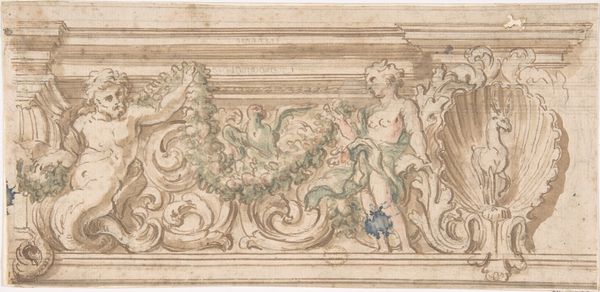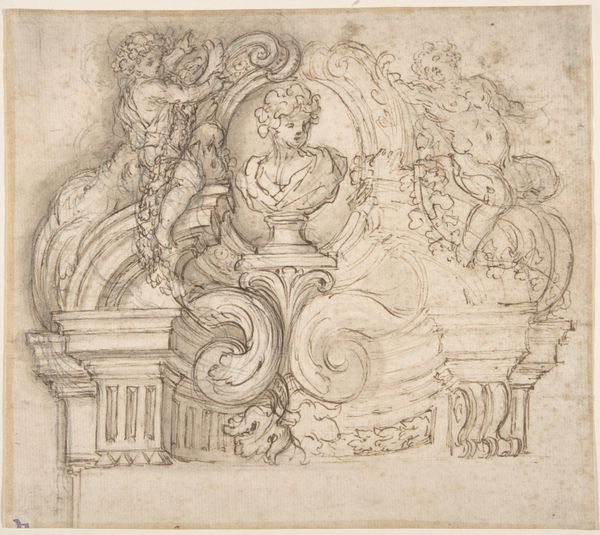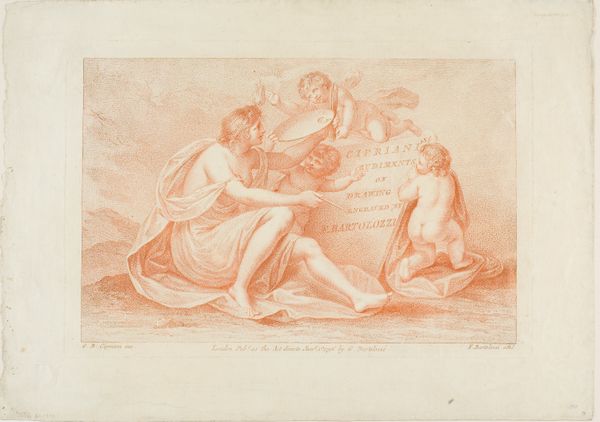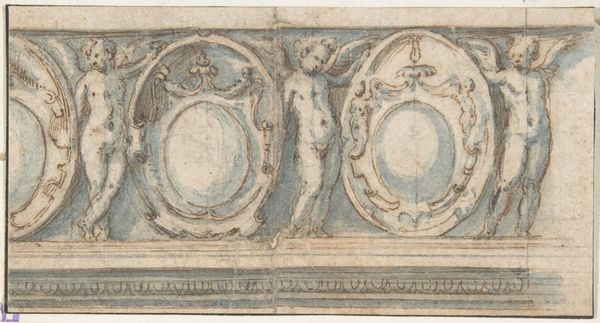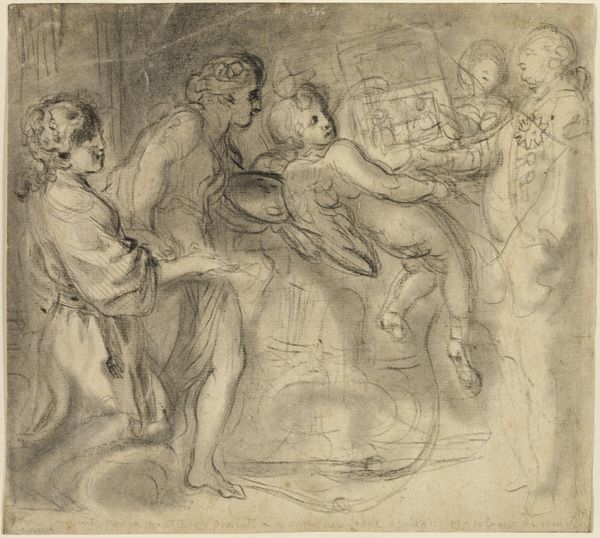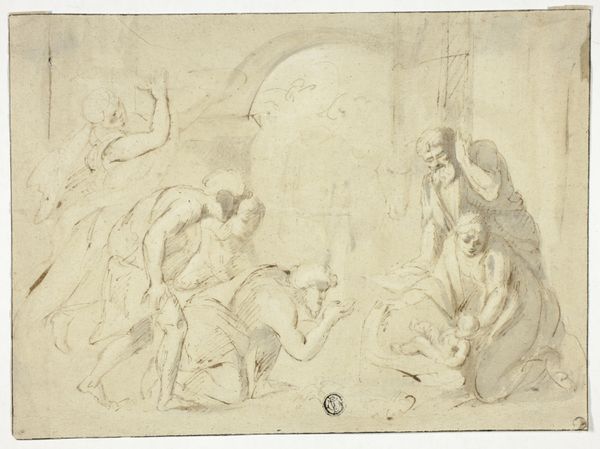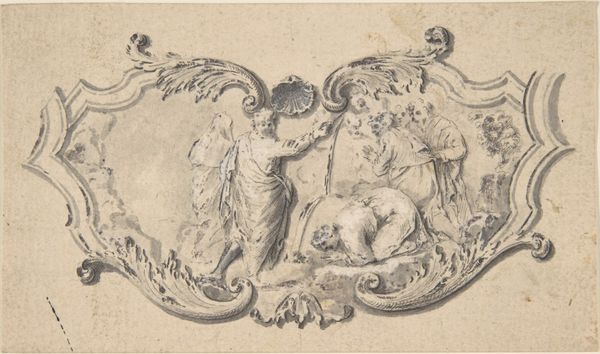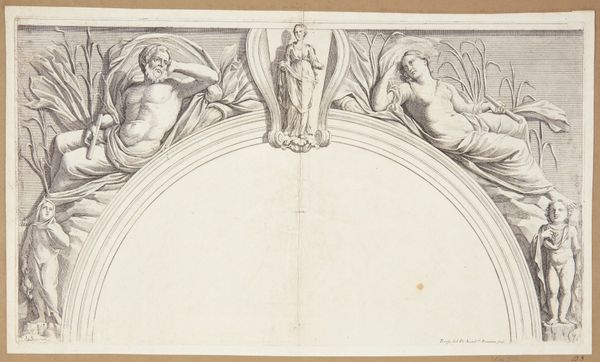
Base of Pilaster with Relief, with 2 Putti, Shield n.d.
0:00
0:00
drawing, print, etching, paper, ink, pencil, graphite, pen
#
portrait
#
drawing
#
allegory
# print
#
etching
#
pencil sketch
#
classical-realism
#
etching
#
figuration
#
paper
#
ink
#
pencil
#
graphite
#
pen
#
history-painting
#
academic-art
Dimensions: 109 × 146 mm
Copyright: Public Domain
Curator: Here we have a work by Thomas Stothard, entitled "Base of Pilaster with Relief, with 2 Putti, Shield." It's an undated piece currently held here at The Art Institute of Chicago, rendered in ink, pencil, and graphite on paper through an etching process. Editor: My first impression is that this is a very gentle rendering of classical iconography. There’s an almost academic quality to the portrayal of the putti, cherubic figures often associated with love and innocence, yet they’re presenting what appears to be a blank shield. Curator: Precisely! Stothard was a prominent figure in British art, closely associated with the Royal Academy, which heavily promoted classical themes and history painting. These putti holding a shield likely references allegorical traditions, commonly used to convey symbolic messages about virtue, valor, or nobility within aristocratic contexts. Editor: The blank shield makes me wonder about its purpose within that historical and social context. Was it meant to be a representation of potential, a kind of “blank slate” upon which to inscribe the achievements of a particular family or individual? Or perhaps it comments on the hollowness of relying on symbols and allegories. Curator: I think the concept of potential is very insightful here. Remember that the late 18th and early 19th centuries were a time of significant social and political upheaval. The aristocracy was under increasing pressure. Therefore, this design perhaps served to promote the importance of established institutions, framing aristocratic identity as something inherent, natural even, represented by the seemingly innocent cherubs. Editor: That’s a powerful reading. But couldn’t it also be seen as a subtle critique? By presenting these figures—who are visually coded as innocent and pure—as bearers of power symbols, does it subtly challenge the very notion of inherited privilege? Perhaps Stothard is encouraging his audience to critically examine the underpinnings of power and the way it's presented. Curator: It is precisely that multilayered reading that I find so interesting. It certainly gives the viewer food for thought. Editor: It really underscores the continuing relevance of looking at art through the lens of power dynamics, doesn’t it? Curator: Absolutely. These dialogues ensure that these artworks never remain static, which I see as our function as a museum.
Comments
No comments
Be the first to comment and join the conversation on the ultimate creative platform.
